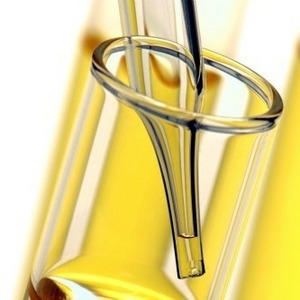Scientists trick iron-eating bacteria into breathing electrons in




February 1, 2013
BY American Society for Microbiology
Scientists have developed a way to grow iron-oxidizing bacteria using electricity instead of iron, an advance that will allow them to better study the organisms and could one day be used to turn electricity into fuel. The study was published on Jan. 29 in mBio, the online open-access journal of the American Society for Microbiology.
The method, called electrochemical cultivation, supplies these bacteria with a steady supply of electrons that the bacteria use to respire, or “breathe.” It opens the possibility that one day electricity generated from renewable sources like wind or solar could be funneled to iron oxidizing bacteria that combine it with carbon dioxide to create biofuels, capturing the energy as a useful, storable substance.
"It's a new way to cultivate a microorganism that's been very difficult to study. But the fact that these organisms can synthesize everything they need using only electricity makes us very interested in their abilities," says Daniel Bond of the BioTechnology Institute at the University of Minnesota—Twin Cities, who co-authored the paper with Zarath Summers and Jeffrey Gralnick.
To “breathe,” iron oxidizers take electrons off of dissolved iron, called Fe(II)—a process that produces copious amounts of rust, called Fe(III). Iron-oxidizing bacteria are found around the world, almost anywhere an aerobic environment (with plenty of oxygen) meets an anaerobic environment (which lacks oxygen). They play a big role in the global cycling of iron and contribute to the corrosion of steel pipelines, bridges, piers, and ships, but their lifestyle at the interface of two very different habitats and the accumulation of cell-trapping Fe(III) makes iron oxidizers difficult to grow and study in the lab.
Advertisement
Scientists think these bacteria must carry out the iron oxidation step on their surfaces. If that's true, Bond reasoned, the outsides of the organisms should be covered with proteins that interact with Fe(II), so you should be able to provide a stream of pure electrons to the outsides of the bacteria and get them to grow.
Bond and his colleagues added the marine iron oxidizer Mariprofundus ferrooxydans PV-1, along with some nutrient medium, to an electrode carefully tuned to provide electrons at the same energy level, or potential, as Fe(II) would provide. The idea, says Bond, was to "fool the bacteria into thinking they're at the world's best buffet of Fe(II) atoms."
It worked. The bacteria multiplied and formed a film on the electrode, Bond says, and eventually they were able to grow M. ferrooxydans with no iron in the medium, proof that the bacteria were living off the electrons they absorbed from the electrode to capture carbon dioxide and replicate. And since the electron donor is a solid surface, say the authors, it's pretty likely that the bacterial electron-harvesting machinery is exposed on the outer membrane of the cell.
Advertisement
It's this capture of carbon dioxide that could enable electrochemical cultivation to create biofuels or other useful products one day, Bond says.
"Bacteria are experts at the capture of carbon dioxide. They build cells and compounds" with the carbon, he says. They might one day be exploited as microscopic energy packagers: bacteria like M. ferrooxydans could capture electricity from an electrode, combine it with carbon dioxide, and package it as a carbon-rich compound we could use as fuel. This would take the energy in electricity, which is ephemeral, and convert it into a tangible product that could be stored in a tank. But that kind of work is a long way off, cautions Bond.
"If there are 100 steps to making this work—this is step one," he says.
Related Stories
The U.S. Department of Energy Bioenergy Technologies Office (BETO) announced up to $23 million in funding to support research and development (R&D) of domestic chemicals and fuels from biomass and waste resources.
The U.S. DOE has announced its intent to issue funding to support high-impact research and development (R&D) projects in two priority areas: sustainable propane and renewable chemicals and algal system cultivation and preprocessing.
Sens. Sherrod Brown, D-Ohio, and Pete Ricketts, R-Neb., in August introduced the Renewable Chemicals Act, a bill that aims to create a tax credit to support the production of biobased chemicals.
The Chemical Catalysis for Bioenergy Consortium, a consortium of the U.S. DOE’s Bioenergy Technologies Office, has launched an effort that aims to gather community input on the development of new biomass processing facilities.
USDA on March 8 celebrated the second annual National Biobased Products Day, a celebration to raise public awareness of biobased products, their benefits and their contributions to the U.S. economy and rural communities.
Upcoming Events










